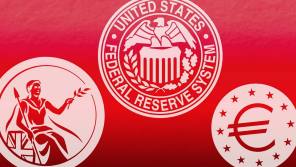

It was easy to come accustomed to these as being normal. However, the events of March 2020 would have come as a surprise for those who were ill-prepared to expect that investing is an emotional journey.
As it was, global equities recovered to their pre-hiccup level during August 2020, to the joy of those who remained patient and disciplined, but many were left exposed for these turbulent few months, wondering how such events would impact their vision of how their retirement would be funded.
Furthermore, with annuity rates continuing their gradual decade-long descent, many retirees face the challenge of managing a possible 30-year retirement period with limited investment experience and no viable alternative retirement arrangement to fund their income needs.
As a result, job opportunities permitting, we will see more individuals continue to remain within their workplace to ensure their income needs are met with maximum comfort.
For those with little choice in the matter, the role of an empathetic, caring financial planner to act as their guide will be essential to ensure they remain comfortable with their new-found position.
Importance of building flexibility into your plan
I often speak with clients to understand what it is about their current life that they are retiring from – typically this will be working hours, commutes (what’s one of those?), and general work stress.
Following this up with discussing what they are retiring to often leads to conversations about spending more time with family, hobbies, and even alternative work arrangements. However, as I write this, we are amid Lockdown 3, so some clients have delayed their retirement as they are not retiring to anything just yet – there is simply nothing to do.
Financially it is beneficial, as the extra income, investment returns, and the reduced withdrawal period, will lead to a much richer retirement (in many ways).
It will be interesting to see how this plays out once restrictions ease.
However, some things lead to a revaluation of the plan when events arise that are outside of our control, which is what was required when one of my clients was made redundant, just a few years before their intended retirement date in an industry where there are not many employers. It is a shame, but that's life.
We subsequently discussed alternative plans, with one showing how income could be structured if they did not return to work, which would require a few alterations to either their household income or expenses and another reconfirming how much extra resource they’d need to attain their desired expenditure. Talking this through has removed the anxiety of making an immediate decision; they know the repercussions of either option.
These areas of retirement planning emphasise the importance of not negating that plans do change and ensuring clients are aware that the planning process is just as important, if not more so than the plan itself.
Retirement Planning Post-Pandemic
Rise of Sequencing Risk
No one truly knows how the markets are to play out in the months or few years ahead, but this recent reminder of the turbulence inherent within investments will serve as a useful reminder for those approaching retirement and thinking about how they will plan for their 30-year life ahead.
Nick Murray often touted the benefits of having a side-fund that would be used to provide withdrawals at the time of market suppression, especially where it is extensive and prolonged, as a means of protecting against sequencing risk.
Regardless, 2020 showed that these pots will provide useful financial and emotional support – a Plan B, per se. After all, some unlucky investors will enter their retirement just at a time when markets are suppressed, making themselves susceptible to this risk impacting their ability to ensure the funds available last throughout their retirement.
Therefore, for those clients that are approaching retirement, the importance of communicating that such possibilities are already built into the plan and broadly at what point this Plan B would become active, such as after a temporary decline of a certain percentage rate, will provide extra reassurances if we find ourselves in similar market positions soon.
Ultimately, the more tools we provide clients with to navigate these challenges, the greater probability that they will lead a rich and enjoyable retirement.
Jason Barefoot is a chartered financial planner at Ascot Lloyd



